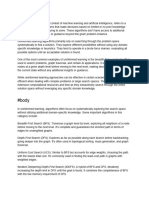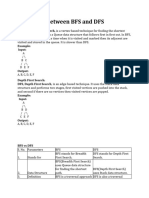0% found this document useful (0 votes)
18 views59 pages2.1 Introduction of AI - Search - Algorithms
Uploaded by
ketaki.mahajanCopyright
© © All Rights Reserved
We take content rights seriously. If you suspect this is your content, claim it here.
Available Formats
Download as PPTX, PDF, TXT or read online on Scribd
0% found this document useful (0 votes)
18 views59 pages2.1 Introduction of AI - Search - Algorithms
Uploaded by
ketaki.mahajanCopyright
© © All Rights Reserved
We take content rights seriously. If you suspect this is your content, claim it here.
Available Formats
Download as PPTX, PDF, TXT or read online on Scribd
/ 59
























































































